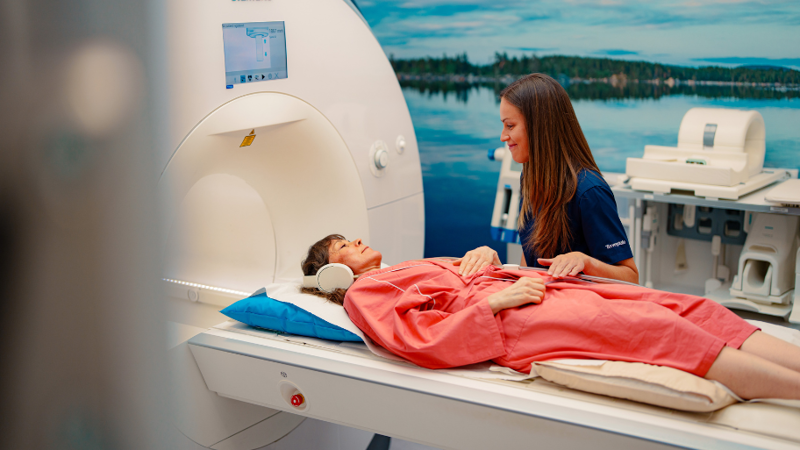Work ability follows from good management – Correct information is needed for everyday management
Work and workplaces are undergoing major changes that challenge every organization. Exhaustion and anxiety are becoming more common, with changes caused by digitalization, labor shortage, an aging population, and the demands for continuous learning weighing on employees. These megatrends can be managed, but we need a systematic approach and business intelligence tools to do so.

The management of work ability plays a key role in every modern organization – it is central to constructing and maintaining a thriving work community. According to Tiina Loikkanen and Johanna Kivimäki, senior consultants at Terveystalo, we cannot expect people alone to change during major transitions.
“It is increasingly important for managers and leaders to understand that we must fix organizations and develop work itself to meet the needs of future workplaces,” says Loikkanen.
To achieve proactive development of work, the management of work ability should be made an inherent part of companies’ strategic and daily management. In this way, it would no longer be the responsibility of individual employees, as is often the case at present. However, the good will of responsible companies often does not turn into appropriate action until management has access to enough information about the real state of well-being at work.
“To date, we have not had enough tools or versatile indicators to support comprehensive management. Even if supervisors manage work ability perfectly, the impact of their good work is not visible to management,” Kivimäki points out.
Work ability management is present in daily work
Kivimäki emphasizes the significance of a systematic and transparent process to effective work ability management. Work ability management is part of day-to-day management and leadership, and its impact can be seen in the improved well-being of employees at work.
“Work ability management is, essentially, part of project management. For it to be successful, it must be planned carefully and carried out determinedly. It is also important to assess the impact of the actions taken and to engage in continuous improvement,” says Kivimäki.
“Work ability management should be made transparent. Data are refined into forecasts, and Terveystalo’s tool makes the impact of activities visible to supervisors, HR, and management,” Loikkanen adds.
Are the indicators adequate?
Companies and organizations now have better insight into the importance of work ability management and monitor a wide range of related indicators. However, indicators such as sickness absence rates reflect past actions. It would be important to consider whether data are collected solely on past phenomena or whether management is truly proactive. In addition to conducting risk assessment, it would be useful to monitor factors that maintain the ability to work. Such data are obtained from personnel surveys, for instance.
According to Loikkanen and Kivimäki, setting requirements is also a form of caring. By encouraging employees to actively talk about their work, we can promote small actions that, in the big picture, influence the company’s eNPS, employee engagement, and even sickness absences.
Latest articles

Terveystalo's digital services have been awarded the internationally recognized ISO27001 information security certification.
Terveystalo's information security practices, processes, and risk management are in line with international best practices.

Does massage help relieve stress? – Touch restores and calms the body and mind
Stress is not always visible on the outside, but the body does show signs when the strain increases. According to Lassi Ylönen, a trained massage therapist at Terveystalo Rela, the body often communicates stress through subtle signs.

Circular economy and artificial intelligence boost performance and improve care
At the heart of sustainable healthcare, technology serves as a tool for improving both the quality of care and accountability. Terveystalo favors solutions that combine sustainability, cost-effectiveness, and medical expertise.

Psychologist: How to make Christmas a relaxed and personal celebration
For many, the anticipation of Christmas begins when cities are decked out in seasonal lights and the first chocolates, calendars, and gingerbread cookies appear on store shelves. Christmas carols ring out and the Tonttuparaati choir sings “Kiire jo on! Kiire jo on!” (Hurry up! Hurry up!). This warm and atmospheric celebration also brings other feelings to mind: how on earth can we get through all this without losing our joy and peace in the rush?

Terveystalo and Gosta Labs deepen their cooperation: the goal is to streamline work with a superior patient information system
Terveystalo is deepening its cooperation with Finnish health technology company Gosta Labs and investing €1 million in the company as a minority investor. The aim is to jointly develop artificial intelligence solutions that improve the quality of care and the efficiency of reception work as part of Terveystalo's new patient information system, Terveystalo Ella.

First aid preparedness in companies requires action and courage
First aid skills increase resilience, but a barometer survey of Finnish organizations' first aid capabilities published in October reveals that the number of trained personnel is alarmingly low.